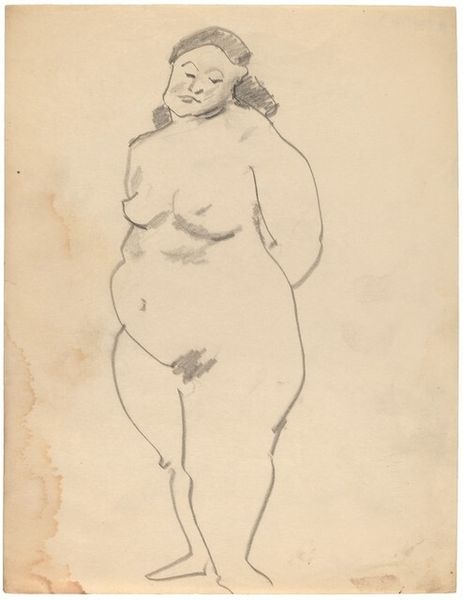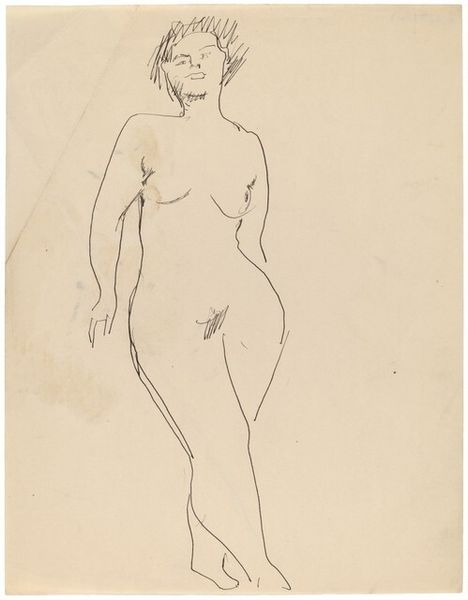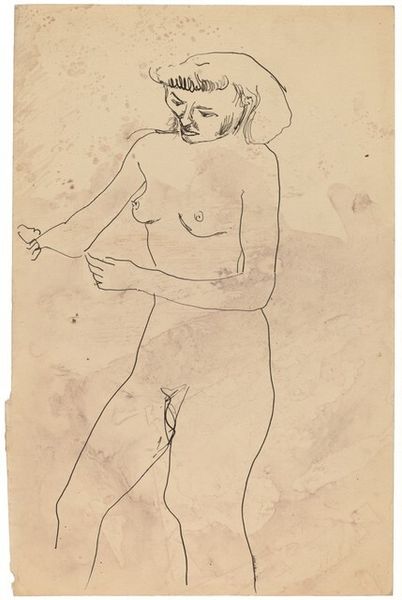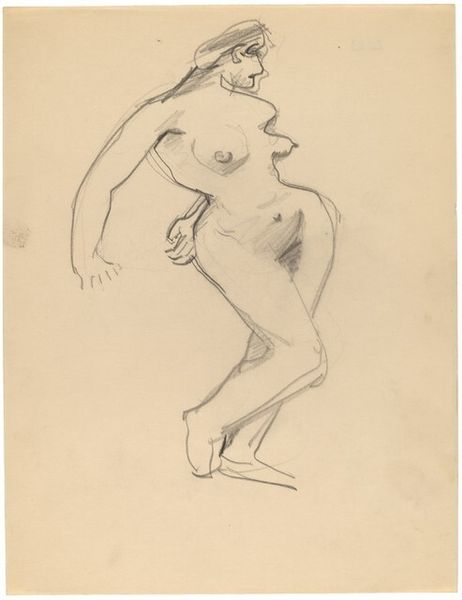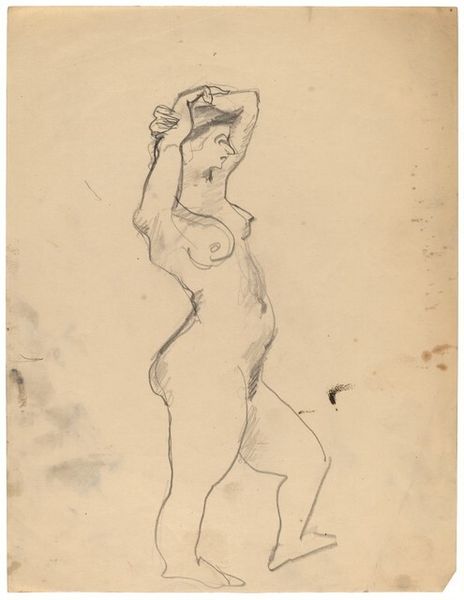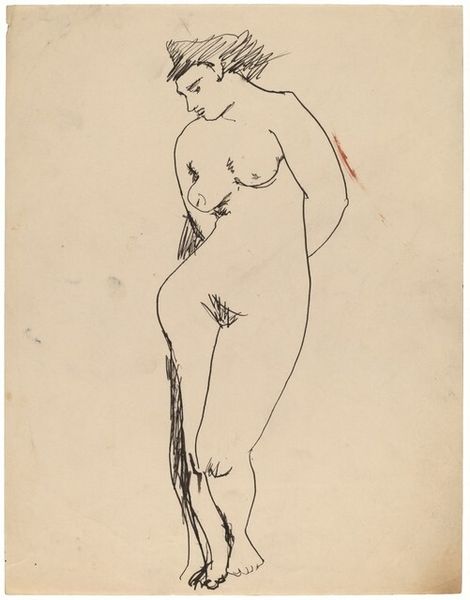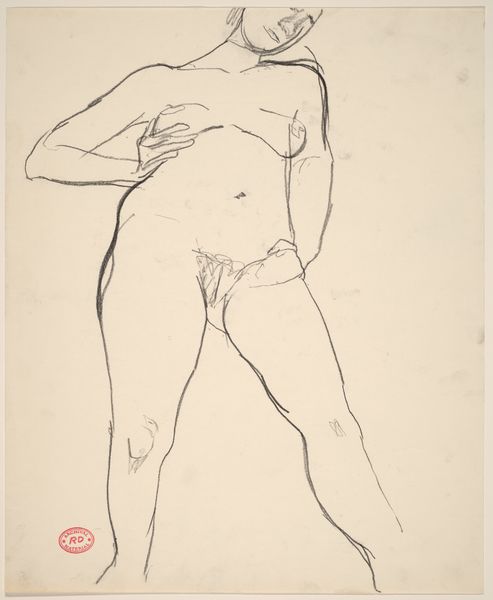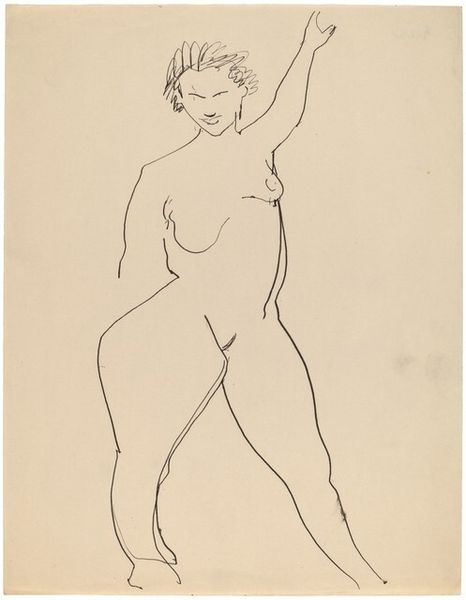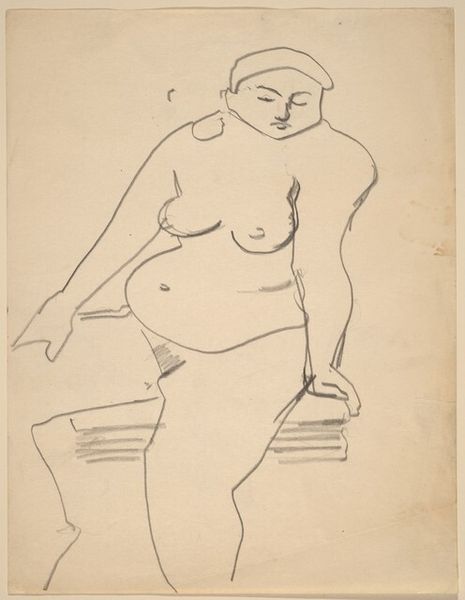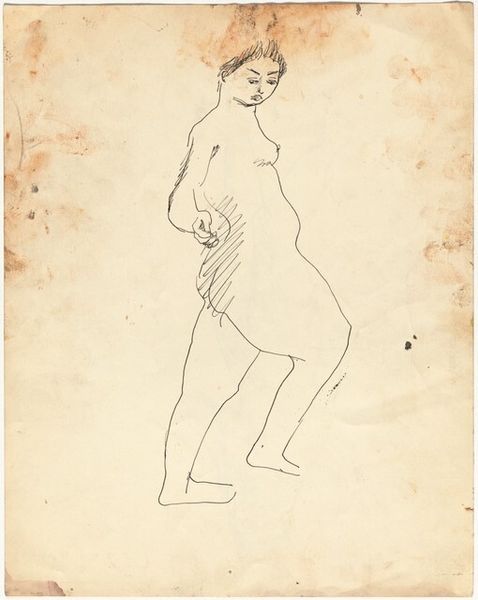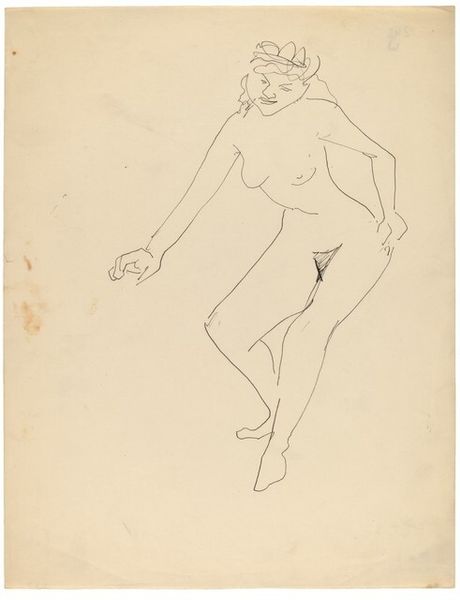
drawing
#
portrait
#
drawing
#
figuration
#
nude
Dimensions: overall: 27.9 x 21.5 cm (11 x 8 7/16 in.)
Copyright: National Gallery of Art: CC0 1.0
Curator: Here we have a drawing by Mark Rothko entitled "Standing Female Nude, Eyes Cast Down to Left." It's rendered in a delicate graphite line on paper. What are your initial impressions? Editor: It feels vulnerable, almost melancholic. The averted gaze combined with the tentative, searching lines really convey a sense of internal struggle or uncertainty. It’s a very human depiction, raw and unidealized. Curator: The line itself is quite expressive, isn't it? Notice how Rothko varies the pressure, creating a sense of volume and contour with such economy. The swift, assured strokes, particularly defining the limbs, articulate both strength and a certain fragility. Editor: It definitely resists the male gaze. Rothko’s focus isn’t on sexualizing the body, but on capturing its weight, its presence, in a way that feels deeply empathetic. The figure's imperfections—the fullness of her form, the slight awkwardness of the pose—contribute to this sense of authenticity. It reminds us that even Rothko, best known for his abstract expressionism, grappled with the figure, grounding him within art historical dialogues. Curator: Exactly. And consider the composition – the figure dominates the sheet, creating a palpable tension between the drawn lines and the surrounding void. There's very little modeling. The form emerges from a network of linear gestures alone. What does that emphasize? For me it emphasizes her corporeal existence, a physical form occupying the pictorial space in an unapologetic way. Editor: Right. Her placement takes ownership of space, and while Rothko presents a nude, his style almost reclaims it from a potential objectification of women by allowing for a character study – of a person’s emotions, a subject aware of her position as a person, rather than an object. The small bit of dark hatching on the cloth further directs the focus, like a pinpoint of shadow against otherwise mostly continuous line art. Curator: A captivating drawing. Through Rothko’s controlled but also seemingly haphazard rendering of lines, the female figure is given not only form, but presence. It showcases an engagement with structure that underlies much of his later, more abstract works. Editor: It offers a unique perspective on the human form, one that embraces imperfections and seeks to capture the emotional landscape within. I like seeing how artists engage with the history of art, like figure studies, while exploring possibilities to evolve it towards representing lived experiences.
Comments
No comments
Be the first to comment and join the conversation on the ultimate creative platform.

